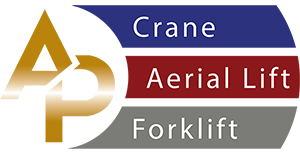
Driving a forklift in reverse is a maneuver that should be undertaken with caution and only in specific situations where it enhances visibility, load handling, or maneuvering. However, safety should always be the top priority, and operators must adhere to proper protocols, maintain clear communication, and exercise caution to prevent accidents and ensure a safe work environment. While forklifts are designed to move both forward and backward, there are certain scenarios where driving in reverse is appropriate:
Better Visibility: When the operator's visibility is compromised in the forward direction due to the size of the load or the layout of the workspace, driving in reverse might provide better visibility of the surroundings. This is especially relevant when navigating tight spaces, corners, or crowded areas.
Load Handling: When handling large or awkwardly shaped loads, driving in reverse can provide better control and precision. This is particularly useful when aligning the load with a specific spot, such as a pallet or a storage area.
Safety Concerns: In some situations, it might be safer to drive in reverse to ensure a clear line of sight. For example, if the forklift is carrying a tall load that obstructs the operator's forward view, driving in reverse allows them to navigate more safely.
Maneuvering: When making intricate maneuvers, such as positioning the forks in a precise location or threading through a narrow passage, driving in reverse can offer greater maneuverability and control.
One particular situation forklift operators may face is the necessity to travel up or down a sloped surface. When operating forklifts in areas that contain slopes and ramps it's important to ensure safety measures are always carried out. Not only do operators be at risk when traveling recklessly on slopes but also the protection of pedestrians can also be jeopardized. The load at the forklift operator could be transporting may be significantly damaged or even destroyed if safety measures are not followed in this circumstance. This week to your site we discuss what should be achieved once traveling on a slope and what should never be done whilst operating a forklift on a slope.
Enroll your operators at our reputed forklift training school, where they may gain the necessary skills and knowledge to flourish in their professions and contribute to a safer workplace.
However, it's important to note that driving a forklift in reverse should be done in compliance with safety guidelines and proper operating procedures. Here are some key considerations:
Operator Training: Only trained and certified forklift operators should drive in reverse. Proper training ensures that operators understand the risks and know how to handle the forklift safely.
Clear Path: Before reversing, operators should ensure that the path is clear of obstacles, pedestrians, and other hazards. Clear communication with coworkers and using horns or warning signals is crucial.
Reduced Speed: When driving in reverse, operators should maintain a slower speed compared to forward driving. This gives them more time to react to any unexpected obstacles.
Stability: Operators should be mindful of the forklift's stability, especially when driving in reverse with a raised load. Sudden movements or sharp turns can increase the risk of tipping.
Use of Mirrors: Mirrors are essential for maintaining proper visibility when driving in reverse. Forklifts are typically equipped with rear-view mirrors to help operators navigate safely. Driving a forklift in reverse can be appropriate in situations where it enhances visibility, load handling, or maneuvering. However, safety should always be the top priority, and operators must adhere to proper protocols, maintain clear communication, and exercise caution to prevent accidents and ensure a safe work environment.
Forklifts are an extremely beneficial tool for work, assisting in the efficient movement of heavy loads which would otherwise require an unprecedented amount of time for you to transfer manually. Forklifts may be dangerous vehicles when operators have not had sufficient training and aren't fully competent in their usage. Supervision and safety procedures should always be set up in addition to adequate training for operators in various situations which they can face of their workplace operations.
Discover excellence in our comprehensive forklift classes, where operators learn to move equipment with accuracy while emphasizing safety and efficiency in all aspects of their work.
